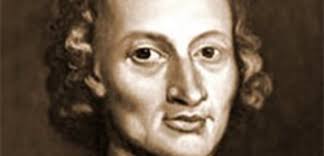Musica. Il segreto del successo è in quattro corde. E’ la magia delle vibrazioni da loro prodotte che decide la fortuna di un brano, che si tratti di rock o r&b o di qualsiasi altro genere. Da Andrea Bocelli, a Bob Marley a Lady Gaga ai Beatles e non solo: il filo rosso che li lega è il Canone di Pachelbel. Ascoltate per credere. (Il testo che pubblichiamo è in inglese e in italiano)
Not until recently, when I was asked what type of music I like listening to, I found it quite easy to dismiss the question by saying that, depending on the mood, I am open to different genres.
Not so long ago, during a work trip, I was asked this same question by a colleague. However, unlike other times, in this occasion the question led to long conversation which covered most of our car journey. At the end of the trip my colleague showed me this video made by Australian comedy group “Axis of Awesome” which indirectly explained my broad and generic answer to the question: what type of music do I listen to?
The video, in an ironic way, shows how four key chords (I-V-VI-IV) are used in many successful pop songs of the last decades creating an, obviously, catchy melody which goes beyond the boundaries of musical genres. The same four chords can successfully apply to an R&B, a Rock or even a Reggae song independently from the mood and message the song is trying to give.
It was now clear, just as in most successful novels there is a love story; in most successful songs you will find the four chords: whether you are at the Metropolitan Opera in New York listening to Andrea Bocelli’s Con te partiro` or at the yearly One Love Festival, just outside of London, listening to Bob Marley’s No woman no cry, you will be listening to the same four chord progression.
 Maybe this is why, these songs, along with other four cord songs (see partial list below) have defeated time to reach the “Olympus” of Pop Music and why most of us, irrespectively of what may be our apparent musical tastes, are able to appreciate them. I’d struggle to find someone who does not like The Beatles’ Let it be, Alice Keys’ No one or U2’s With or without you.
Maybe this is why, these songs, along with other four cord songs (see partial list below) have defeated time to reach the “Olympus” of Pop Music and why most of us, irrespectively of what may be our apparent musical tastes, are able to appreciate them. I’d struggle to find someone who does not like The Beatles’ Let it be, Alice Keys’ No one or U2’s With or without you.
But who is the father of this progression? Who is the Manzoni (the author of The Betrothed, a novel considered to be the model of most modern Italian literary fiction) of Pop’s four chords?
Ultimately, this title would have to go to a successful Baroque German teacher and composer who lived in the 17th century and that composed the Canon in D Major, presumably, for the wedding of Sebastian Bach’s older brother in 1694. This composer is Johann Pachelbel, one of the last middle baroque composers, an indirect influencer of Sebastian Bach (who was tutored by Christoph Bach, a pupil of Pachelbel). What is today known as the Pop Progression is a variant of Pachelbel’s Canon, a source of inspiration for several authors. From Aphrodite’s Child, who in 1968 include Pachelbel as one of the authors of Rain and Tears, to Jovanotti, who in 2008, replicating to the accuses of having plagiarised Spanish hit, La primera persona, of Alejandro Sanz, declared to have been inspired by Bach, whilst most likely referring to the Canon for his success A te, as probably even Sanz had.
Ultimately, as I am typing this, I am fairly certain that another four chord piece is being composed and, likewise, I am pretty sure that, irrespectively of whether it is a rock, an r&b or a classic song, I will find the melody and those very four chords, capable of unlocking something in my spirit that will allow me to find a temporary but sweet harmony.
Traduzione italiana
Fino a poco tempo fa, quando mi chiedevano che tipo di musica mi piacesse, rispondevo che dipendeva dal mood e che non avevo preferenze per quanto riguarda i generi. Recentemente durante un viaggio di lavoro, un collega mi ha fatto la stessa domanda. Ma questa volta diversamente dalle altre, la conversazione si è prolungata. E alla fine lui mi ha mostrato anche un video realizzato dal gruppo comico australiano, gli “Axis of Awesome”. Un video che indirettamente giustifica la risposta vaga che ero solito dare alla domanda, appunto, quale genere di musica ascolti.
In maniera ironica la band sostiene, e ne fornisce le prove, che moltissime canzoni pop di grande successo degli ultimi decenni hanno utilizzato la progressione a quattro corde – I-V-VI-IV (Do Maggiore, Sol Maggiore, La Minore, Fa Maggiore – C, G, A, F)– per creare melodie orecchiabili che piacciano al di là dei confini dei generi musicali. Quelle quattro corde possono decretare la popolarità di un brano R&B o reggae che sia, indipendentemente dalle emozioni o dal messaggio che contengono.
Ora è chiaro: come il segreto di molti best seller va ricercato nelle storie d’amore, quello di molte canzoni pop di successo è senz’altro racchiuso nelle quattro corde: se tu ascolti Andrea Bocelli al Metropolitan di New York che canta “Con te partirò” o se, all’One love festival, che si fa ogni anno fuori Londra, senti”No woman no cry” di Bob Marley, ritroverai quella stessa combinazione di vibrazioni.
Potrebbe essere davvero questa la ragione per cui tante canzoni sono riuscite a battere ogni record e a entrare nell’Olimpo della musica pop. E potrebbe essere anche questo il motivo per cui la maggior parte di noi, a prescindere dai gusti musicali, le apprezza. E’ una bella sfida trovare qualcuno a cui non piaccia “Let it be”, dei Beatles; “No one” di Alicia Keys o “With or without you” degli U2.
Ma chi è il padre di questa progressione musicale. Chi è il Manzoni delle quattro corde del Pop? Questo titolo viene comunemente attribuito a un insegnante e compositore di successo della Germania del periodo medio barocco, vissuto nel 17esimo secolo, autore del “Canone in D maggiore”, scritto presumibilmente per le nozze del fratello di Sebastian Bach nel 1694. Il suo nome è Johann Pachelbel, alla sua epoca noto e apprezzato musicista, ritenuto grande influencer indiretto di Sebastian Bach (che venne educato alla musica da Christoph Bach, allievo non a caso di Pachelbel).
Quella che oggi è conosciuta come la Pop progression è una variante del Canone di Pachelbel, ed è ufficialmente fonte di ispirazione per molti. Come per esempio la band Aphrodite’s Child, che nel 1968 incluse il compositore tedesco del ‘700 tra gli autori del celeberrimo “Rain and Tears”, brano che divenne prima la “colonna sonora” del Maggio Francese, trasmesso incessantemente per radio durante quei giorni caldi, e poi un successo mondiale. O come Jovanotti, che nel 2008, respinse le accuse di plagio del brano spagnolo “La primera persona” di Alejandro Sanz, sostenendo che per la sua canzone “A Te” si era ispirato a Bach. Il che significa indirettamente al Canone.
Mentre scrivo sono certo che qualcuno stia componendo un pezzo che contiene la famosa progressione e sono quasi sicuro che, sia che si tratti di rock o r&b o musica classica, quelle quattro corde saranno capaci di aprire un canale dentro di me, nel mio spirito, che mi permetterà di provare una temporanea e dolce armonia.






1 commento
Your article is very interesting but it has one error. Andrea Bocelli has sung in concert at the Metropolitan Opera House but NOT “Con te partirò”. He sang only arias and classical music songs. Bocelli has said he will never sing pop in an opera house. He does not mix genres. When he sings in a stadium concert, he always sings “Con te partirò” at the end of the concert.